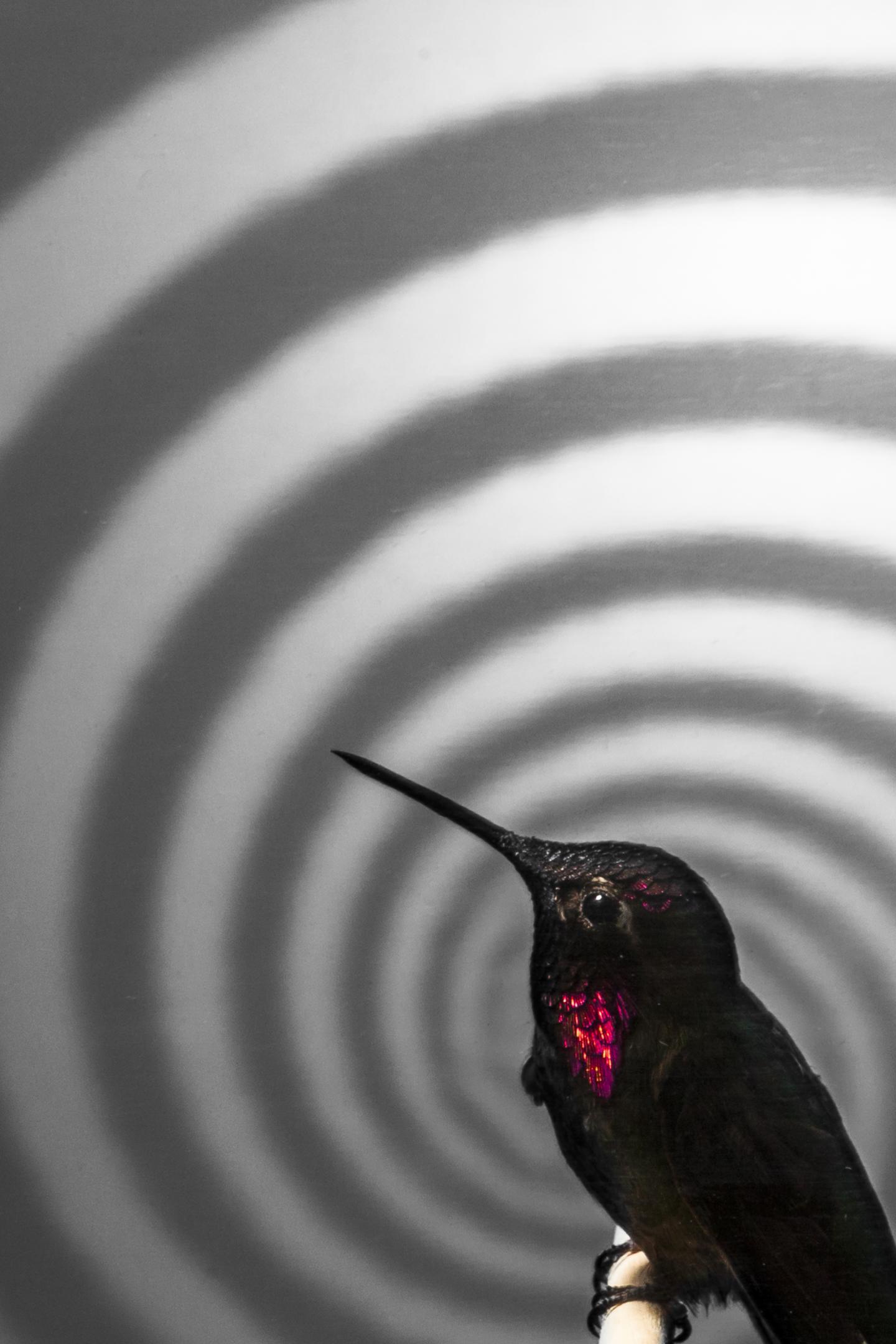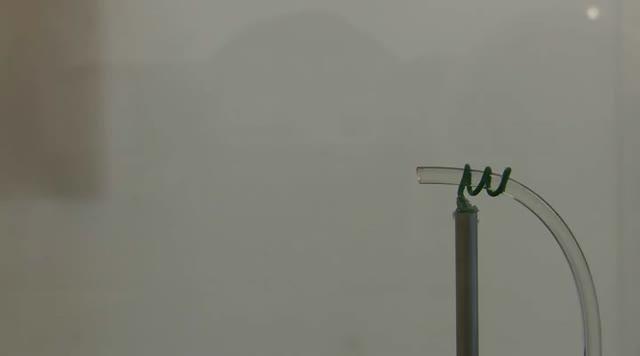Hummingbirds' remarkable ability to hover in place is highly contingent on the tiny bird having a completely stationary visual field, according to University of British Columbia research published in the Proceedings of the National Academy of Sciences.
UBC zoologists Benjamin Goller and Douglas Altshuler projected moving spiral and striped patterns in front of free-flying hummingbirds attempting to feed from a stationary feeder.
Even minimal background pattern motion caused the hummingbirds to lose positional stability and drift. Giving the birds time to get used to the stimuli didn't eliminate the disruption. Projecting a combination of moving and stationary patterns in front of the birds didn't help either, although birds were able to regain some stability.
Editors note: Photos and video of the hummingbird experiment available at: http://tinyurl.com/q6yaxm5
"We were very surprised to see how strong and lasting the disruption was -- birds with hovering and feeding abilities fine-tuned to the millimetre were off the mark by a centimetre," said Goller. "We think the hummingbird's brain is so precisely wired to process movement in its field of vision that it gets overwhelmed by even small stimuli during hovering."
It's the first time researchers have directly measured the impact of moving visual patterns on free flight in birds.
"Our brains interpret visual motion based on our current circumstances," says Altshuler. "We react very differently to sideways movement in a parked car than while driving. Now we want to investigate how birds use vision during transitions from mode to mode, for example as they move from hovering to forward flight."

This is a flying Anna's hummingbird during a preliminary experiment.
(Photo Credit: Photo by: © Matthew Shain 2014)

A tube containing sugar water is placed in front of an LCD computer monitor with a looming black-and-white spiral pattern (clockwise rotation). The feeding bird oscillates back and forth at the feeder.
(Photo Credit: University of British Columbia)
Source: University of British Columbia